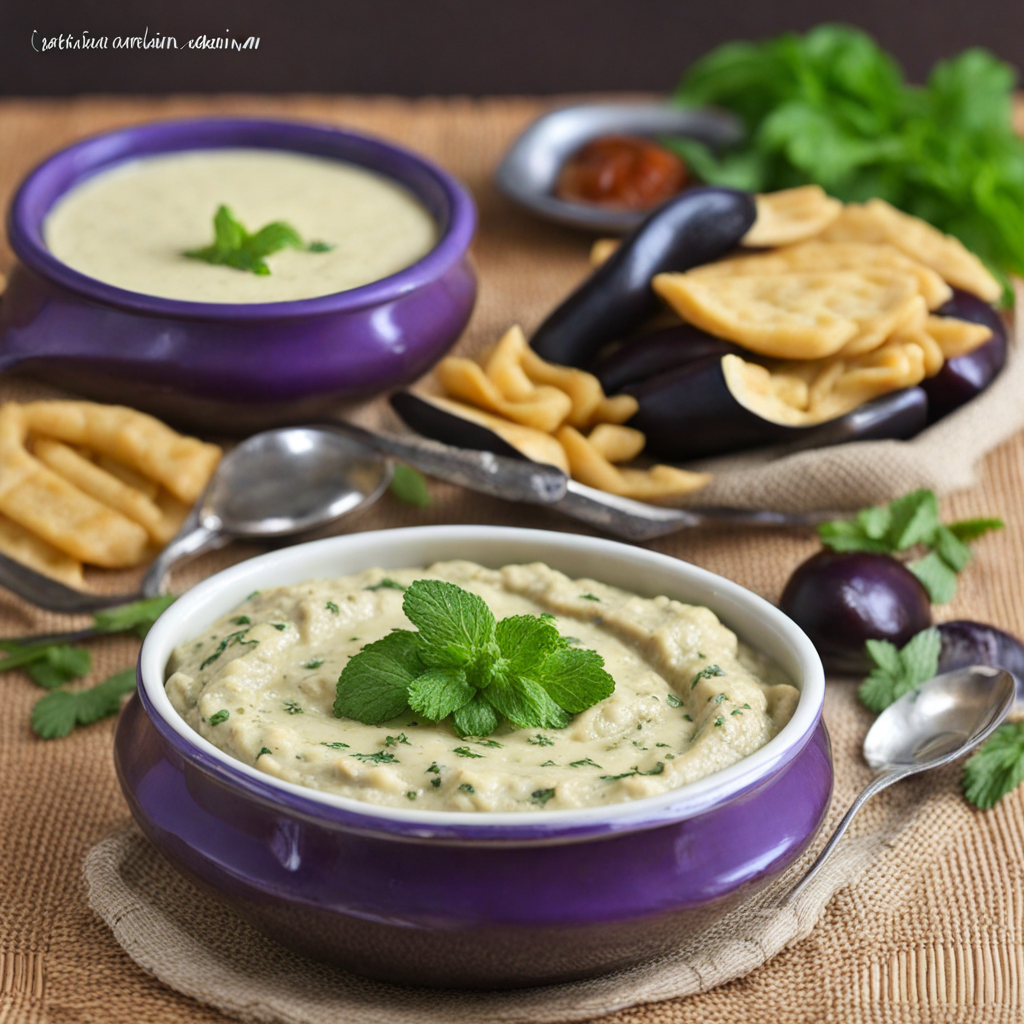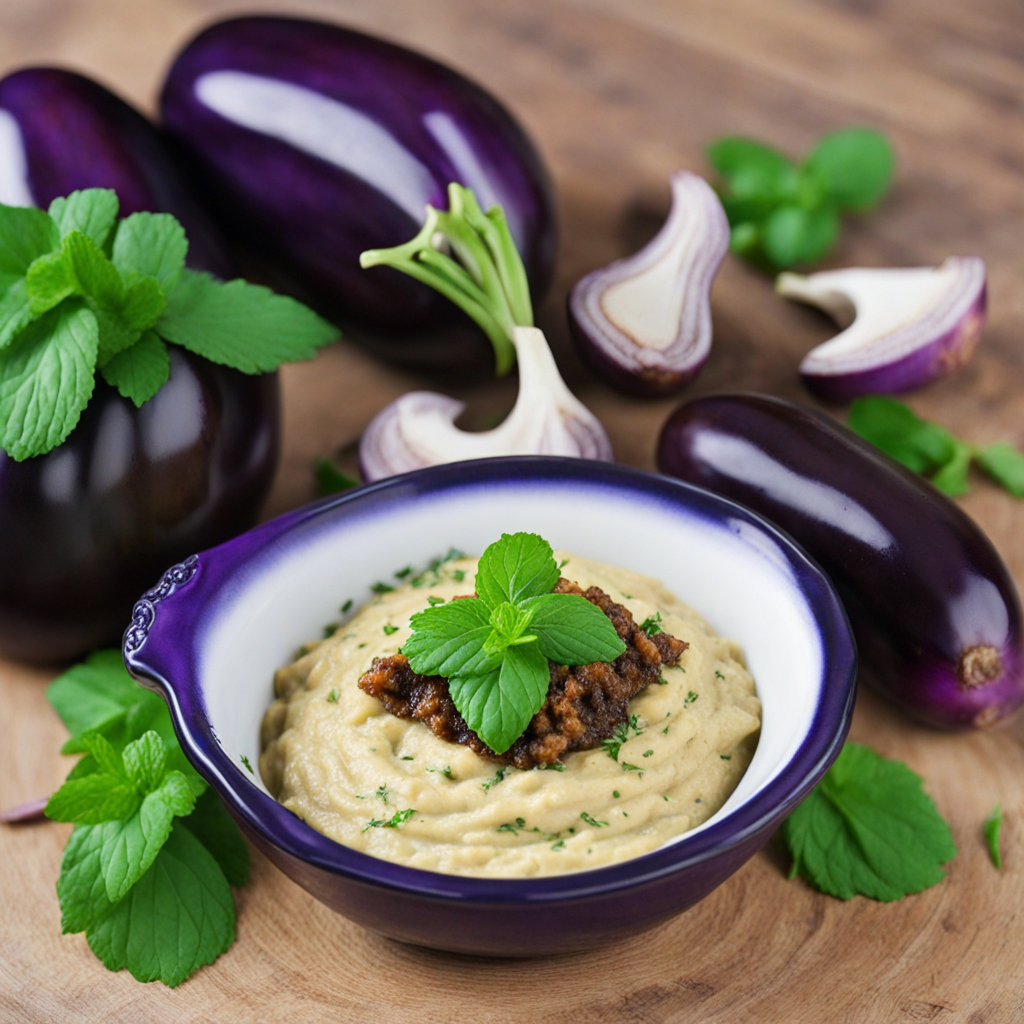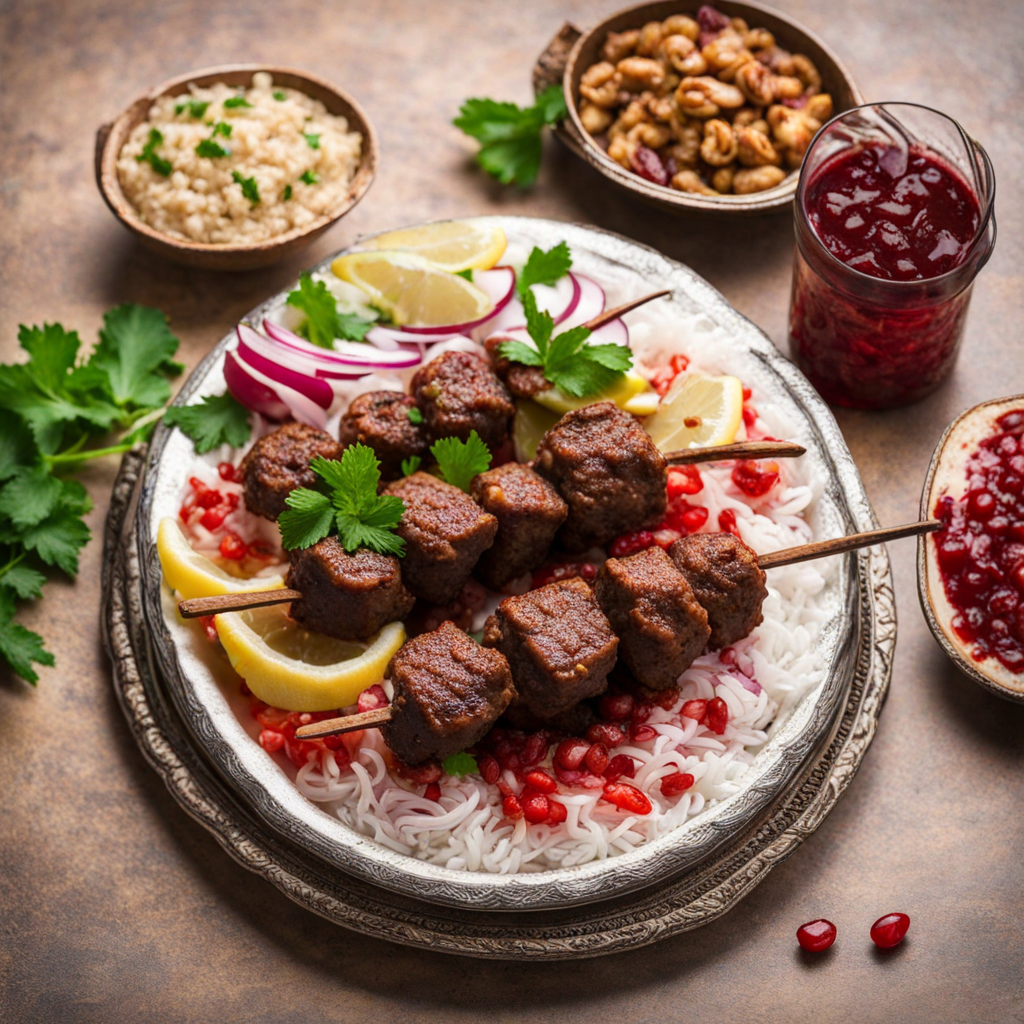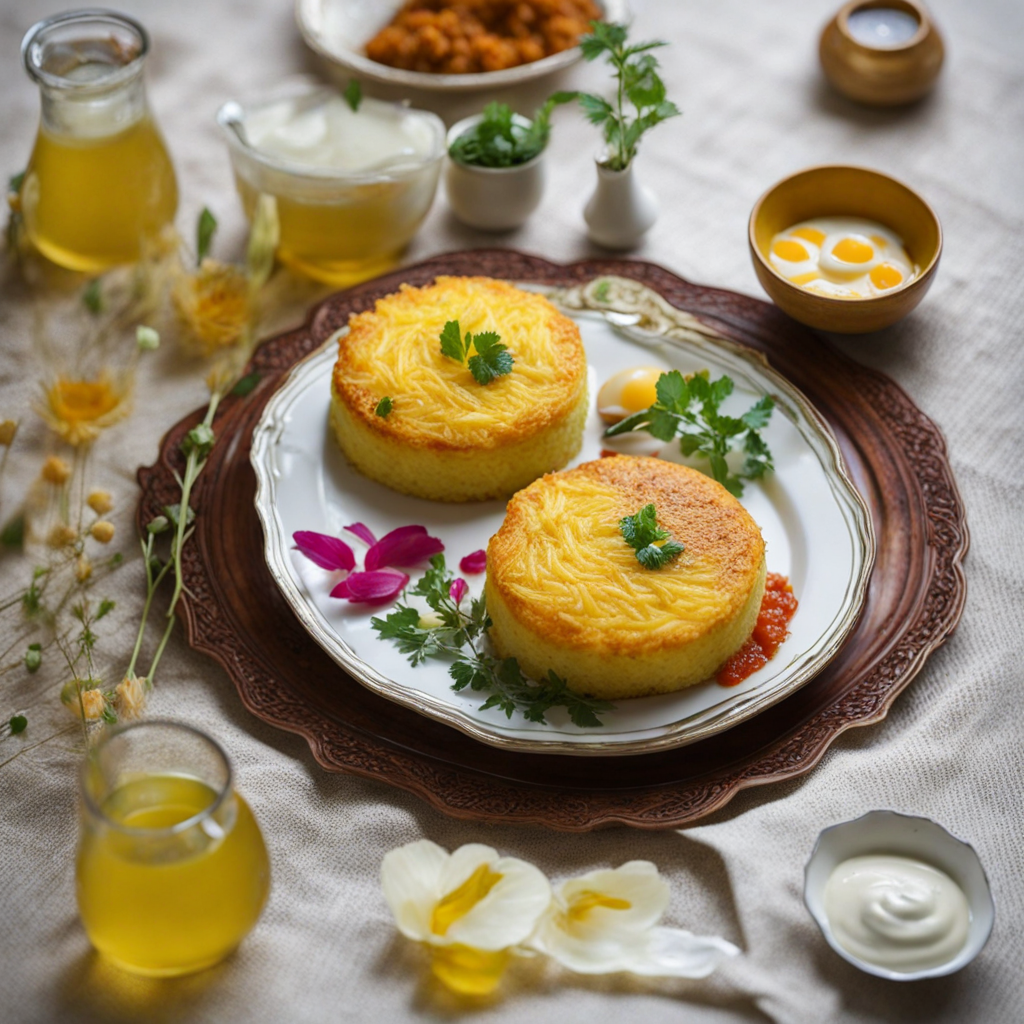Kashk e Bademjan
کشک بادمجان, or Kashk-e Bademjan, is a beloved Iranian dish that embodies the rich culinary heritage of Persia. This traditional eggplant dip has roots deeply embedded in Iranian history, tracing back to ancient times when eggplants were first cultivated in the region. The dish showcases the Persian affinity for combining flavors and textures, and it has evolved over centuries, becoming a staple in both everyday meals and festive gatherings. The primary ingredient of Kashk-e Bademjan is eggplant, which is typically roasted or grilled to impart a smoky flavor. The eggplant's natural sweetness is balanced by a variety of other ingredients, creating a dish that is both complex and comforting. The use of کَشک (kashk), a fermented whey product, is essential to the dish. Kashk adds a tangy depth that complements the sweetness of the eggplant, creating a harmonious blend of flavors. The dish is often garnished with fried onions, garlic, and various spices, enhancing its aromatic profile and adding visual appeal. Preparation of Kashk-e Bademjan involves several steps, starting with the roasting of the eggplants until they become soft and charred. This roasting process not only develops the flavor but also gives the dish its signature smoky aroma. Once the eggplants are cooked, they are peeled and mashed, then mixed with sautéed onions and garlic. The addition of kashk is a critical step that transforms the dish; it is stirred in while the mixture is cooked
How It Became This Dish
Origin of کشک بادمجان کشک بادمجان, pronounced as "kashk-e bademjan," is a beloved Iranian dish made primarily from eggplants (بادمجان) and kashk (کشک), a fermented whey product. The roots of this dish trace back to ancient Persia, where the use of eggplants is well documented in historical texts. Eggplants were introduced to the region through trade routes that connected Persia to India and the Mediterranean, where they were cultivated for centuries. The combination of eggplant with kashk, a staple of Persian cuisine, creates a unique flavor profile that is both creamy and tangy. The dish showcases the Persian culinary tradition of utilizing local ingredients, which often results in a harmonious blend of flavors. Kashk itself is derived from the whey of yogurt, and its use in cooking dates back to ancient times. It was a practical solution for preserving milk and adding depth to dishes, making it a natural complement to the earthy tones of roasted eggplants. \n\n Cultural Significance In Iranian culture, food is more than just sustenance; it is an expression of identity and a means of bringing people together. کشک بادمجان is often served as a side dish or a dip and is typically enjoyed with bread, making it a communal meal that fosters sharing and togetherness. It holds a special place in Persian homes, particularly during gatherings and festive occasions, symbolizing hospitality and warmth. The dish is also prevalent in various regional cuisines throughout Iran, adapting to local tastes and ingredients. In the bustling bazaars of Tehran, food vendors may serve kashk-e bademjan as a quick snack, while in the more traditional settings of Isfahan, it might be prepared with a touch of saffron or garnished with fried onions and walnuts. These variations reflect the diverse culinary landscape of Iran, where local customs and ingredients intertwine to create unique interpretations of classic dishes. \n\n Development Over Time As with many traditional dishes, the preparation of کشک بادمجان has evolved over time. Historical accounts suggest that its popularity surged during the Safavid dynasty (1501-1736), a period known for cultural flourishing and culinary innovation. The Safavids brought significant changes to Persian cuisine, emphasizing the use of fresh herbs, spices, and dairy products. This era also saw the introduction of new ingredients from the Americas, such as tomatoes and peppers, some of which might have influenced variations of kashk-e bademjan. The 20th century marked a significant turning point for Persian cuisine, including کشک بادمجان. As globalization began to take hold, Iranian expatriates carried their culinary traditions to various parts of the world, where they adapted recipes to suit local ingredients and tastes. The diaspora has played a crucial role in popularizing this dish beyond Iran's borders, introducing it to international food lovers and contributing to its recognition as a staple of Middle Eastern cuisine. \n\n Ingredients and Preparation The core ingredients of کشک بادمجان are simple yet flavorful, with eggplants taking center stage. Traditionally, the eggplants are roasted over an open flame to achieve a smoky flavor, a technique that has remained popular in Iranian cooking. In modern kitchens, some may opt for grilling or baking to achieve a similar effect. After roasting, the eggplants are peeled and mashed, forming a creamy base for the dish. Kashk, the essential ingredient that adds depth and tanginess, is then incorporated into the mixture. Alongside kashk, other common ingredients include sautéed onions, garlic, and a mix of spices such as turmeric, which adds warmth and color. Fresh herbs like parsley and mint may be used as garnishes, enhancing the dish’s aromatic qualities. The final touch often includes a drizzle of olive oil or butter, enriching the overall texture and flavor. \n\n Modern Variations In contemporary Iranian cuisine, the dish has seen various adaptations that cater to modern palates and dietary preferences. Vegetarian and vegan versions of کشک بادمجان are widely enjoyed, with many opting for plant-based alternatives to traditional dairy products. Some cooks experiment by adding additional vegetables, such as tomatoes or bell peppers, to enhance the dish's nutritional profile and visual appeal. Moreover, international influences have led to new serving styles and presentations. In some restaurants, kashk-e bademjan is transformed into a gourmet appetizer, served with artisanal breads or alongside a colorful array of dips and mezze. The dish has also found its way into fusion cuisine, where chefs blend Persian and Mediterranean elements, creating unique interpretations that resonate with a global audience. \n\n Conclusion کشک بادمجان stands as a testament to the rich culinary heritage of Iran. Its evolution from a traditional dish rooted in ancient practices to a modern favorite enjoyed worldwide reflects the adaptability and resilience of Persian cuisine. As it continues to capture the hearts and palates of people across cultures, kashk-e bademjan serves not only as a delicious dish but also as a symbol of connection to the past and the enduring spirit of Iranian hospitality. Whether enjoyed at a bustling street vendor in Tehran or in a sophisticated restaurant abroad, this dish remains a cherished aspect of Iran's cultural identity, inviting all to partake in its rich history and flavor.
You may like
Discover local flavors from Iran







